Travel to SF
Travel to SF – The Neighborhoods
A jumbled collage of colorful neighborhoods and beautiful views, a taste for imaginative cuisine and a zeal for adventure. San Francisco boasts jaw-dropping sights, world-class cuisine, cozy cafes and plenty of booming nightlife venues. Spend an hour or two sunning yourself alongside sea lions on the bay, admiring the views of the city from Twin Peaks, or strolling along the Marina. Or, for the San Franciscan experience, enjoy a ride on a cable car or hop on a boat tour for a cruise beneath the Golden Gate Bridge.
San Francisco is the nation’s leading tech-hub and a popular international tourist destination. The city offers visitors a unique blend of chilly summer fog, steep rolling hills and eclectic mix of Victorian and modern architecture. The Golden Gate Bridge, cable cars, and Chinatown are just a few of its recognizable features. The city is also a principal banking and finance center, and the home to more than 30 international financial institutions. The city is home to the University of California, San Francisco, which is entirely dedicated to graduate education in health and biomedical sciences as well as the University of California, Hastings College of the Law, San Francisco State University, the City College of San Francisco and the University of San Francisco.
Crowds gravitate to the touristy Fisherman’s Wharf area (which offers spectacular views of Alcatraz). The Presidio offers a glimpse of the famous Golden Gate Bridge. The Mission District, the Haight and the Castro for exposure to all of the different varieties of the San Francisco lifestyle.
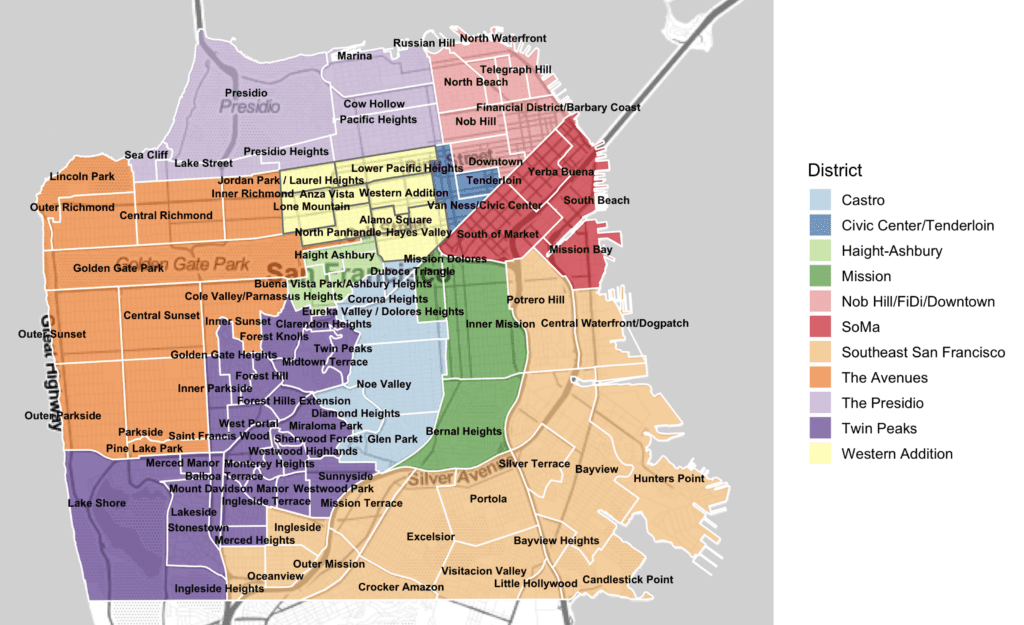
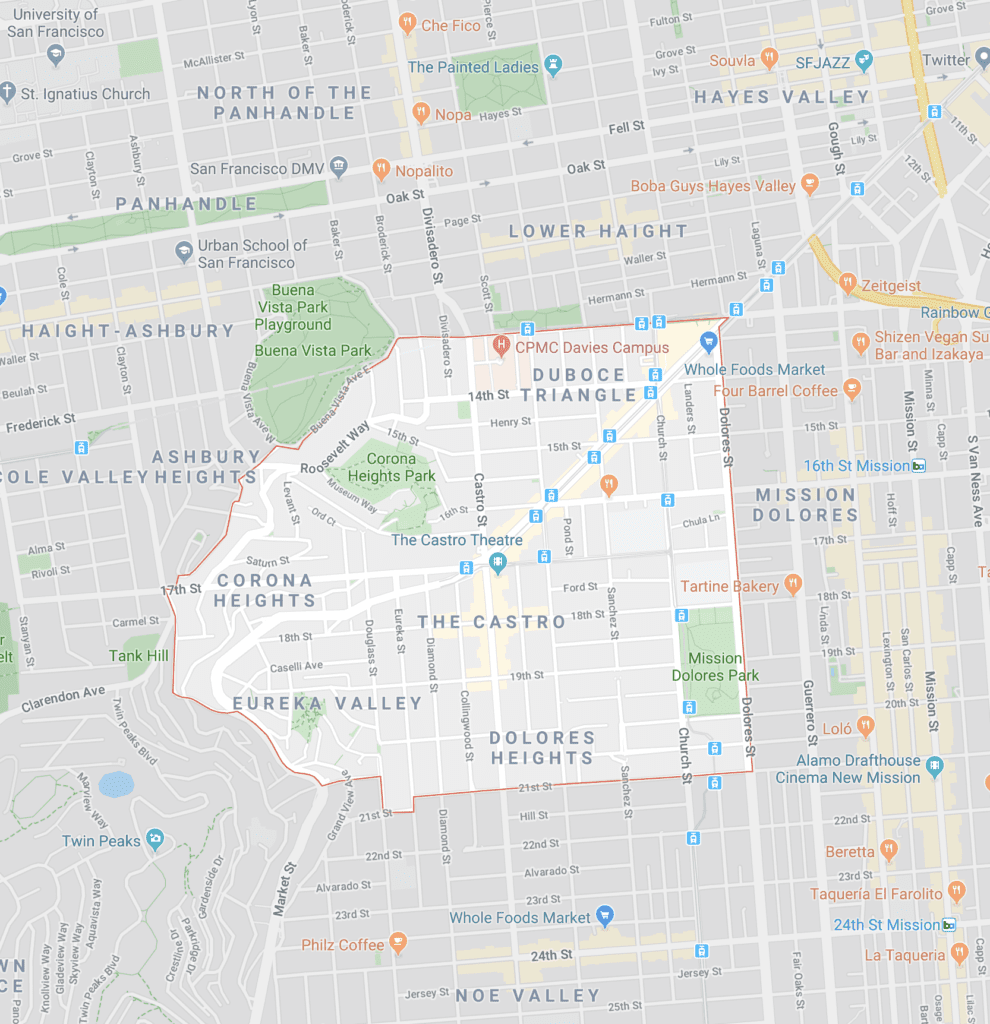
Travel to SF – The Castro
The Castro is known for being a “gay mecca,” which means it’s also a tourist attraction, but if you’re off the main strip, it’s also a great, even quiet, place to call home. The Castro District, in Eureka Valley, is synonymous with gay culture. Revelers often spill onto the sidewalks at numerous bars, like Twin Peaks Tavern, whose floor-to-ceiling windows were revolutionary when it opened in 1972. The lavish Castro Theatre and the GLBT Historic Museum are also found here, as are homey restaurants and adult shops.
Who lives here: This neighborhood is constantly changing, but the Castro still reflects the high percentage of LGBT residents (singles and families) in the city, and typically they are engaged and actively participate in their neighborhood.
Where to eat: Frances, El Castillo, Kitchen Story

Travel to SF – Chinatown
There is no neighborhood in San Francisco where the line between local and tourist is more solidly drawn. This is one of the oldest and most established Chinatowns in the U.S. Beyond iconic Dragon’s Gate, a bustling maze of streets and alleys brims with dim sum joints and other traditional eateries. Also found are herbalists, bakeries, souvenir shops, and dark cocktail lounges and karaoke bars. There are ornate temples, including the landmark Tien How, as well as the Chinese Historical Society of America Museum.
Who lives here: Chinatown has the largest Chinese population outside of Asia. It also has 15,000 people living in 20 square blocks which makes it the most densely populated urban area west of Manhattan.
Where to eat: Liholiho Yacht Club, AltoVino, Mister Jiu’s, Cotogna
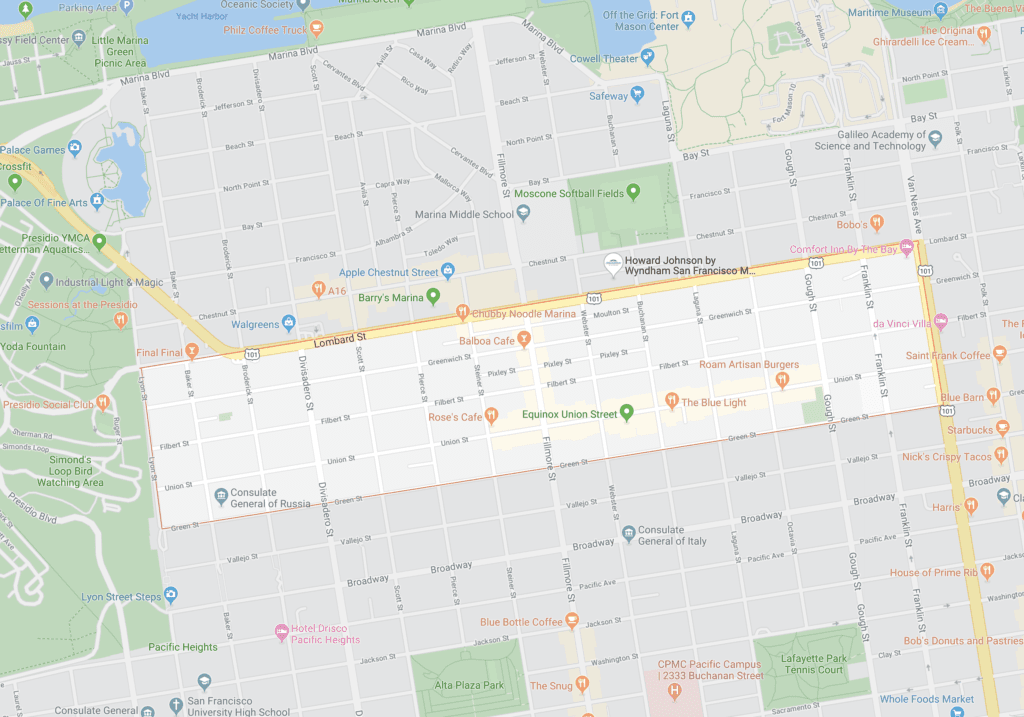
Travel to SF – Cow Hollow
It’s like the Marina’s big sister with lots of good restaurants and plenty of gyms to work off the calories after. Cow Hollow is an affluent section of town that’s popular with young professionals. Union Street, the main drag, is crawling with chic fashion boutiques, pilates studios, juice shops and beauty salons. Restaurants range from French fine dining to Italian bistros to brunch cafes, and there are also sports bars and wine lounges. The area’s historic past is on display at the landmark McElroy Octagon House built in 1861.
Who lives here: Young urban professionals; families with children
Where to eat: Atelier Crenn, Flores, Delarosa

Travel to SF – Financial District
The Financial District is the city’s business center. Among the skyscrapers that dominate the skyline is the striking, spire-topped Transamerica Pyramid building. There is a wealth of happy-hour hot spots and elegant date-night destinations, including the classic Tadich Grill, the city’s oldest restaurant. The Jackson Square Historic District features remnants of the Barbary Coast, a 19th-century red-light district. Living in Financial District offers residents a dense urban feel and most residents rent their homes. In Financial District there are a lot of bars, restaurants, coffee shops, and parks.
Who lives here: Many young professionals live in Financial District and residents tend to be liberal. The median age is 46 and 20% of resident shave families with kids under 18.
Where to eat: Boulevard, The Slanted Door, Tadich Grill, Way Fare Tavern, Kokkari Estiatorio, Quince, Bix
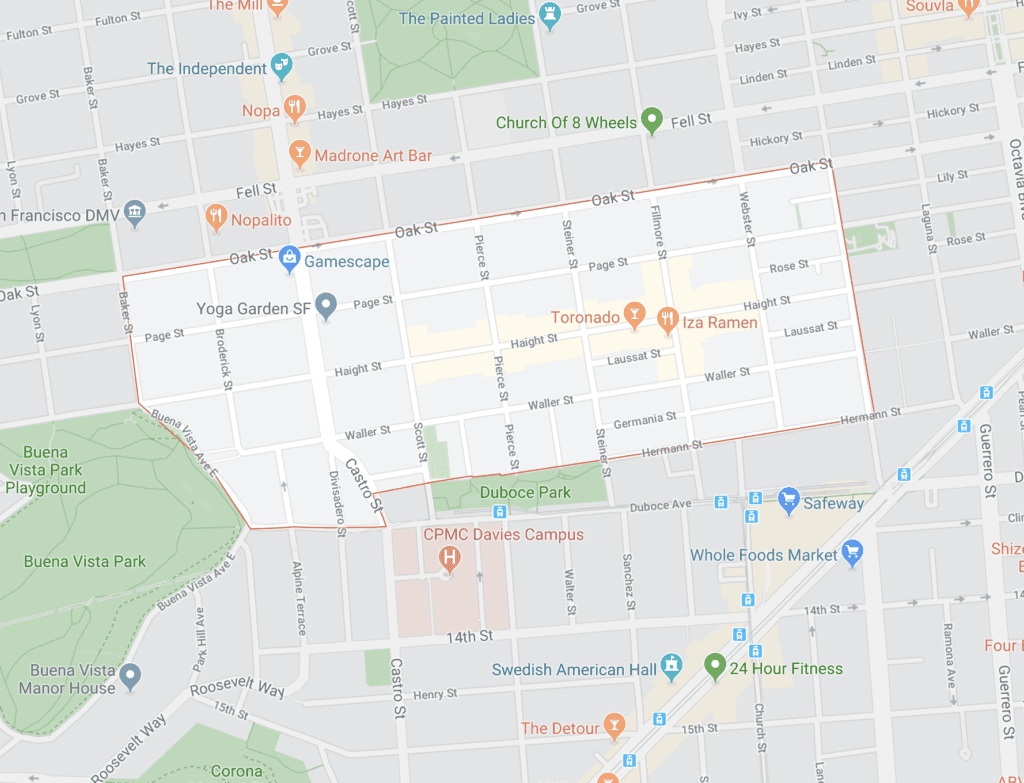
Travel to SF – Lower Haight
This is the ‘hood all of the edgy cool kids move to when they come to SF. Young locals embrace the Lower Haight for its scruffy, laid-back vibe. Cozy coffeehouses, old-school record shops and local art galleries dot the bike-friendly district. The scene perks up after dark with craft beer bars such as the Toronado, a cash-only local institution, plus sports pubs and funky clubs with dance floors. Nearby Duboce Park has a playground and popular off-leash dog area.
Who lives here: Young people; people who love their bikes; hipsters
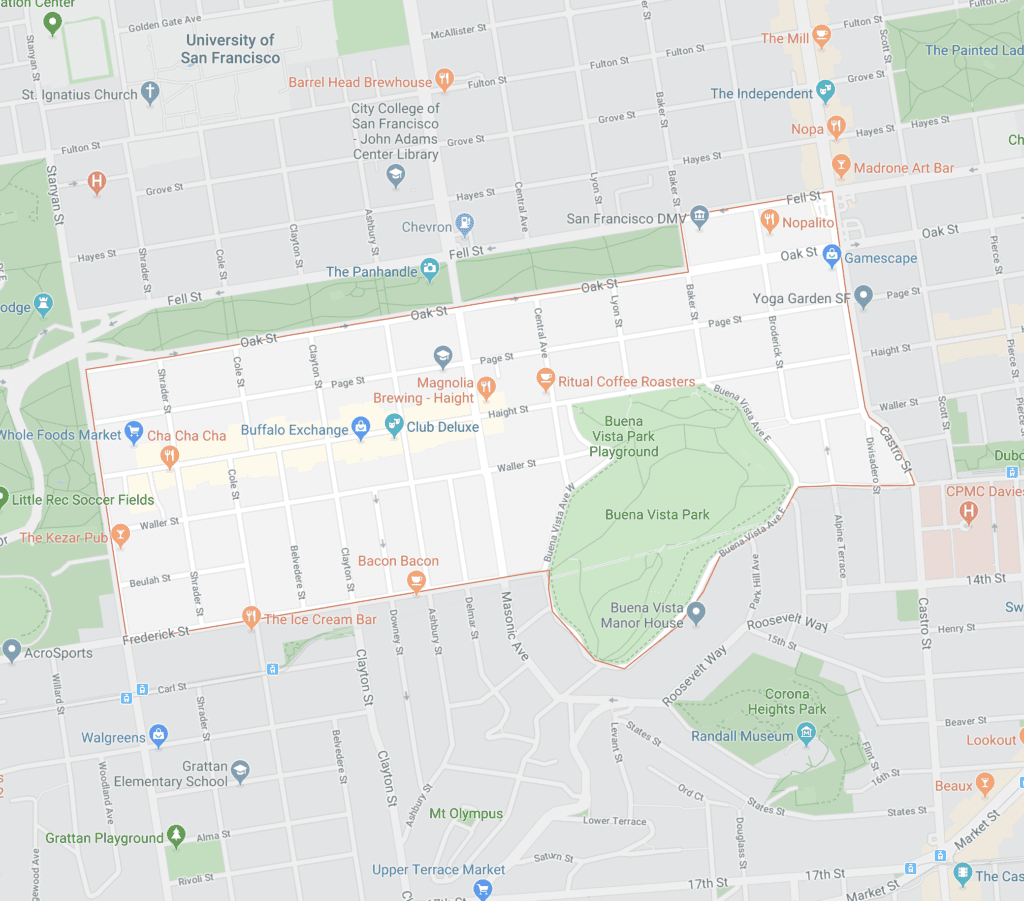
Travel to SF – Upper Haight
The Upper Haight can be annoying thanks to the tourists looking for the ’60s and street kids looking for free money, but it’s right next to Golden Gate Park and central to pretty much everything. The Castro is the birthplace of the 1960s counterculture movement, Haight-Ashbury draws a lively, diverse crowd looking to soak up the historic hippie vibe. Upper Haight Street is a hodgepodge of vintage clothing boutiques, record shops, bookstores, dive bars and casual, eclectic restaurants. Bordering Golden Gate Park, the neighborhood features many colorful, well-preserved Victorian homes, including the storied Grateful Dead House.
Who lives here: Former (and current) hippies; hipsters; longtime residents; newcomers. The Upper Haight, like so many neighborhoods, is really a melting pot. You won’t see a lot of suit and ties though.
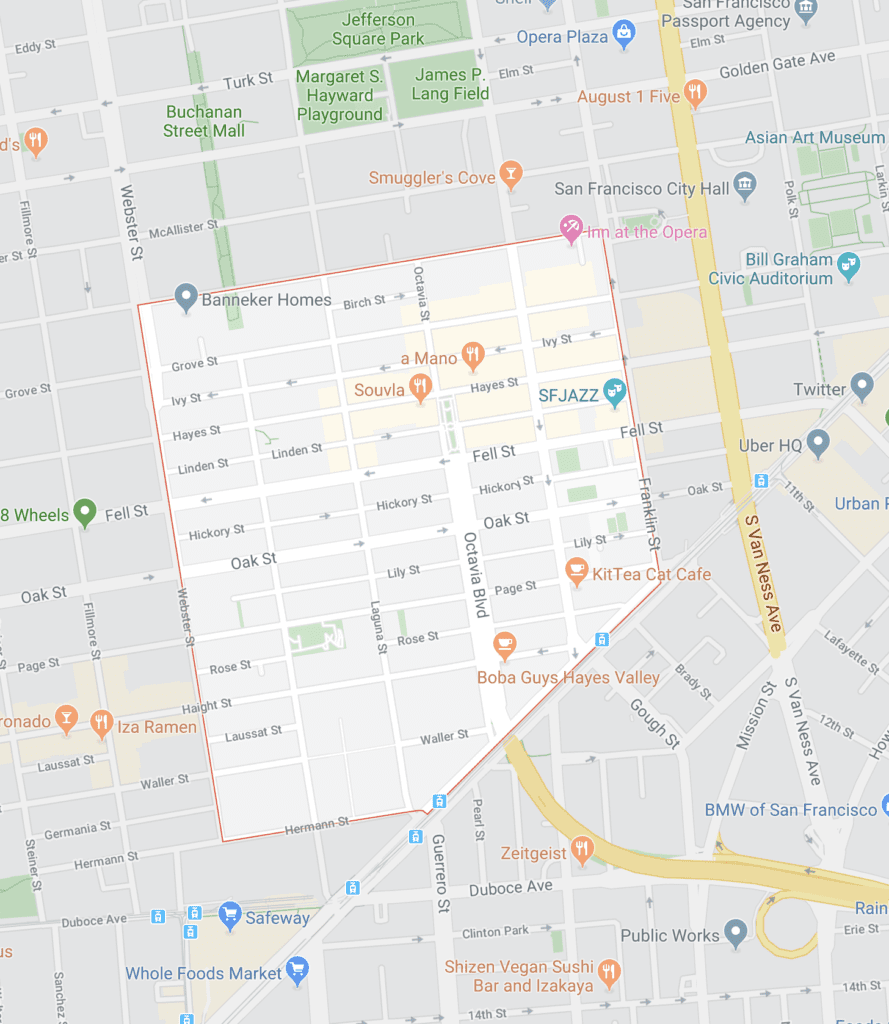
Travel to SF – Hayes Valley
Hayes Valley used to be super seedy back in the day, but now people use words like “chic” and “trendy” to describe this bustling corridor. Hayes Valley is a cool, revitalized neighborhood in the Western Addition. The main commercial stretch, Hayes Street, teems with upscale boutiques for designer fashions and home decor, plus dessert shops, chill watering holes and a wide array of on-trend restaurants. The close-knit neighborhood features a community garden, a pocket park with art installations, and access to music and theater near the Civic Center.
Who lives here: Young professionals, though Hayes Valley remains diverse, despite gentrification efforts – many different backgrounds and socioeconomic levels. Don’t get confused by Hayes Street. The folks who shop and hang out there are for the most part not neighborhood residents.
Where to eat: Petit Crenn, Rich Table, Nightbird, Monsieur Benjamin
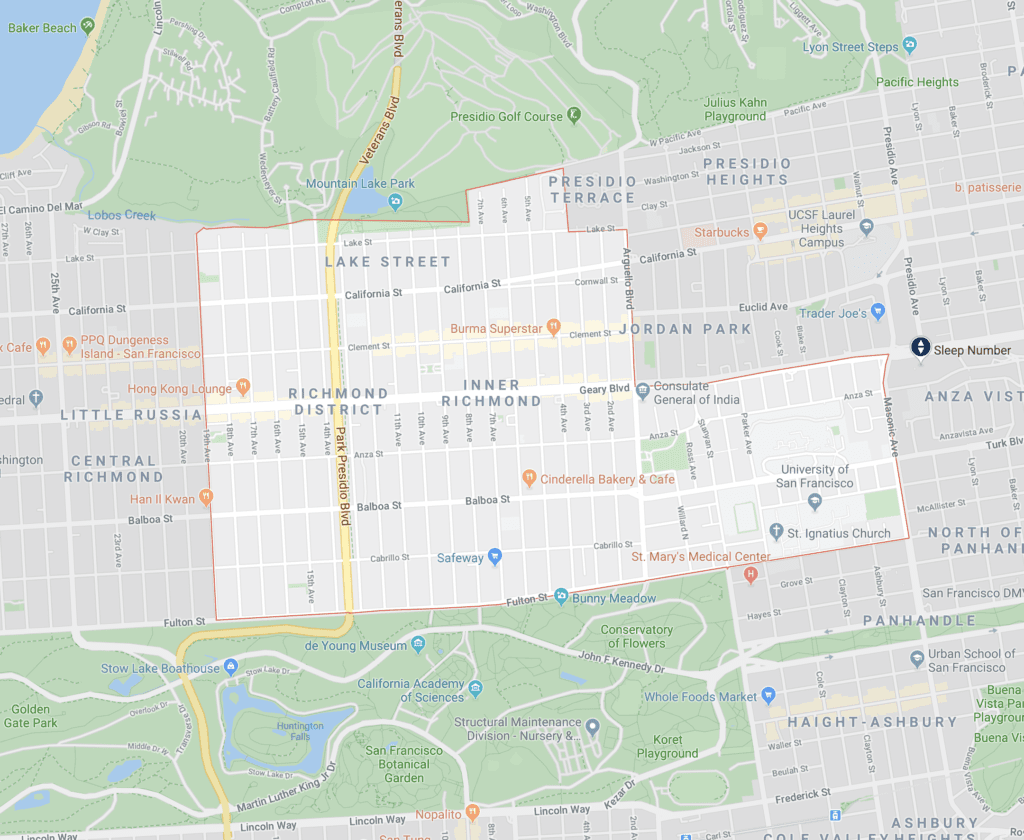
Travel to SF – Inner Richmond
It’s kind of like a mini Chinatown that’s also close to a ton of parks. Inner Richmond, positioned between the Presidio and Golden Gate Park, is an under-the-radar, mainly residential neighborhood with a multicultural makeup. Clement Street’s concentration of dim sum joints has earned it the nickname New Chinatown, but casual Burmese, Thai and Vietnamese restaurants also line the blocks, along with independent shops. The area is sprinkled with a number of Russian eateries and Irish pubs.
Who lives here: The Richmond has a lot of Irish and Russian roots and there’s also a big Chinese population.
Where to eat: Spruce, Wako Japanese Restaurant, Chapeau!
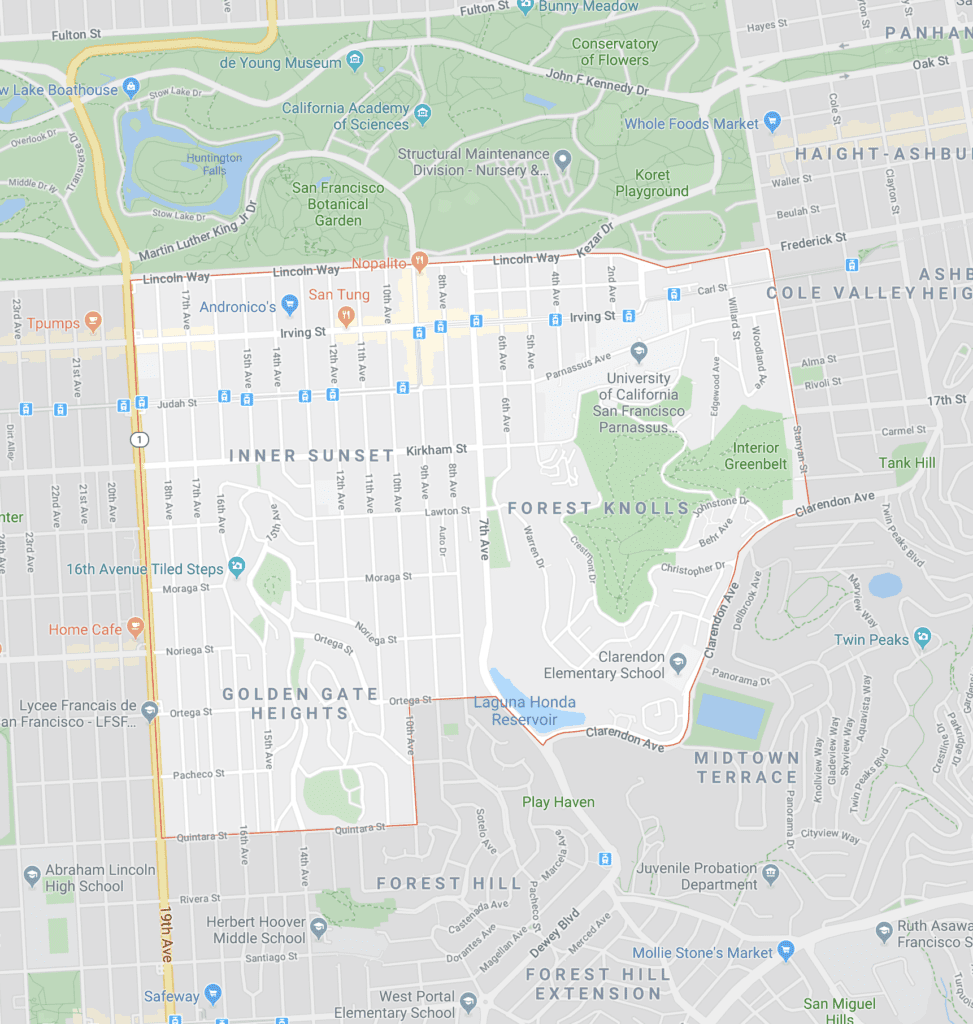
Travel to SF – Inner Sunset
People either love the Inner Sunset or they hate it. Either way, it’s really not that far out there and it just feels like San Francisco. Inner Sunset, located just south of Golden Gate Park’s museums and gardens, attracts families and UCSF students to its quaint, often fog-shrouded residential blocks. Asian and Mexican restaurants, cozy cafes and dark watering holes cluster near the corner of Irving Street and Ninth Avenue. Urban hikers can climb the colorful 16th Avenue Tiled Steps to see citywide panoramas at hilltop Grand View Park.
Who lives here: People who were born in SF; UCSF students; families.
Where to eat: Nopalito, Ebisu Restaurant, The Taco Shop at Underdogs
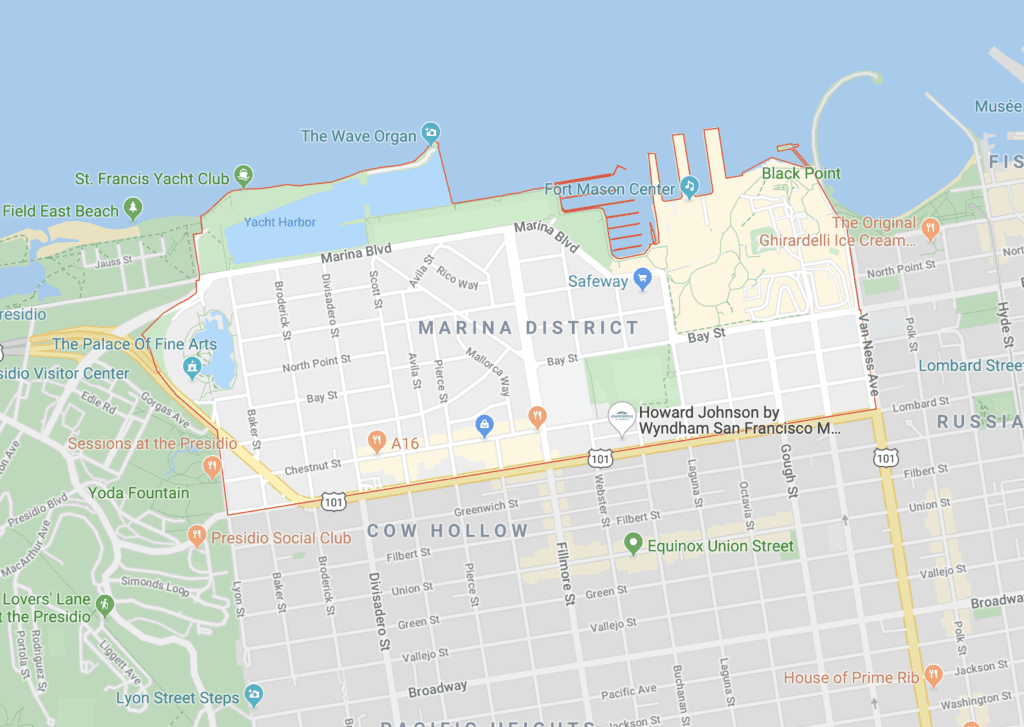
Travel to SF – The Marina
The Marina has a terrible reputation that anyone who lives there would argue is totally undeserved. You know the people who live there really love it since they’re willing to pay that much rent to live on landfill. The scenic Marina District, on the city’s northern shore, is known for its upbeat bars and restaurants. Fort Mason, a former military base, is a multifaceted arts complex and event space. A connected grassy park, called Marina Green, has a running and bike path and expansive views of Golden Gate Bridge, Alcatraz and yachts on the water. The Palace of Fine Arts, dating back to 1915, is a neoclassical landmark.
Who lives here: Young professionals; people who were in sororities and fraternities; people who were young professionals, but are now older and have babies.
Where to eat: to A16, Tacolicious, and Delarosa
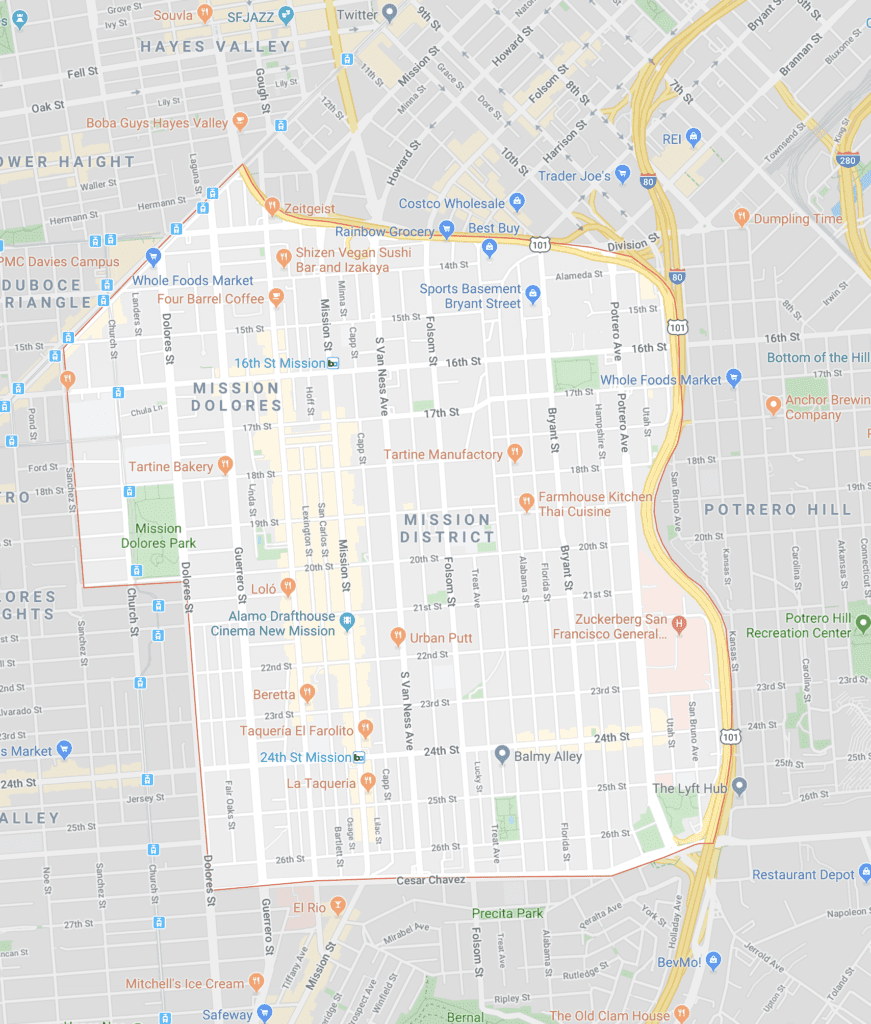
Travel to SF – The Mission
Easily SF’s most popular neighborhood thanks to the sunshine and bar scene, the Mission is also at the heart of almost every housing development and gentrification debate. Named for the 1776-built Mission Dolores, the Mission District is an exuberant, evolving neighborhood with Latino roots and a hipster vibe. Old-school taquerias and eclectic live-music clubs mix with chef-driven eateries and craft cocktail lounges. There are also tattoo parlors, gourmet ice cream shops and Dolores Park, a popular weekend hangout with skyline views. Vibrant murals line streets such as Clarion Alley.
Who lives here: A mixed group – low riders, tech workers, artists, foodies and not-so-retired revolutionaries. Hispanic families; blue-collar workers; hipsters; tech workers; 20-somethings.
Where to eat: Dine at Flour + Water, Foreign Cinema, Burma Love, Lazy Bear, Hawker Fare, Locanda, Californios
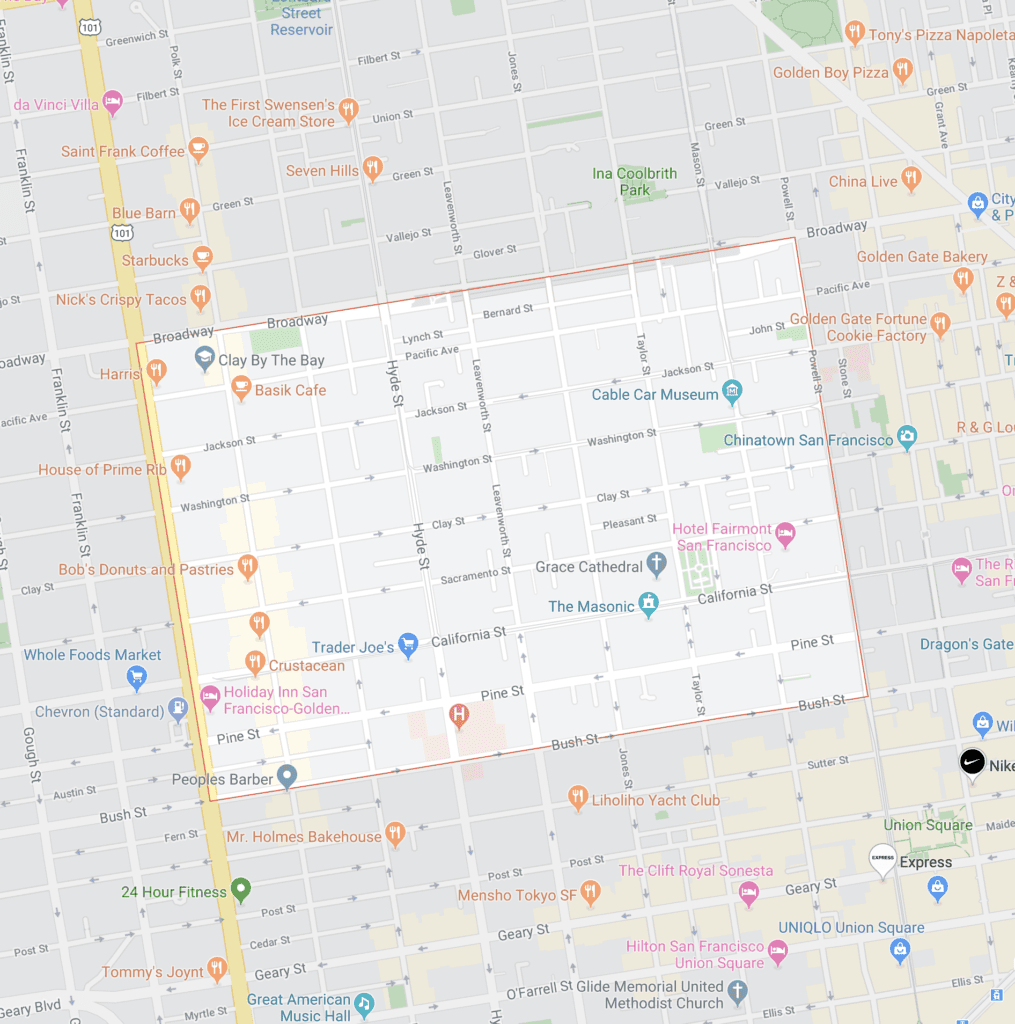
Travel to SF – Nob Hill
Know before you go: some people call it “Snob Hill.” Also, there are a lot of swanky hotels on top of the hill, aka: lots and lots tourists. Still, there’s no denying it’s a gorgeous spot, thanks to Grace Cathedral and the amazing views. Once home to the mansions of the Big Four railroad barons, Nob Hill retains a sense of wealth and privilege. Some of the city’s swankiest hotels are here, as are the ornate, Gothic-style Grace Cathedral and charming Huntington Park. Steep streets are dotted with restaurants and nightspots like the Top of the Mark lounge, with its 360-degree views. The Cable Car Museum exhibits antique cars alongside live machinery.
Who lives here: Upper-class families; young urban professionals; old money.
Where to eat: Acquerello, Street Restaurant and Bar, Nob Hill Cafe, Lord Stanley
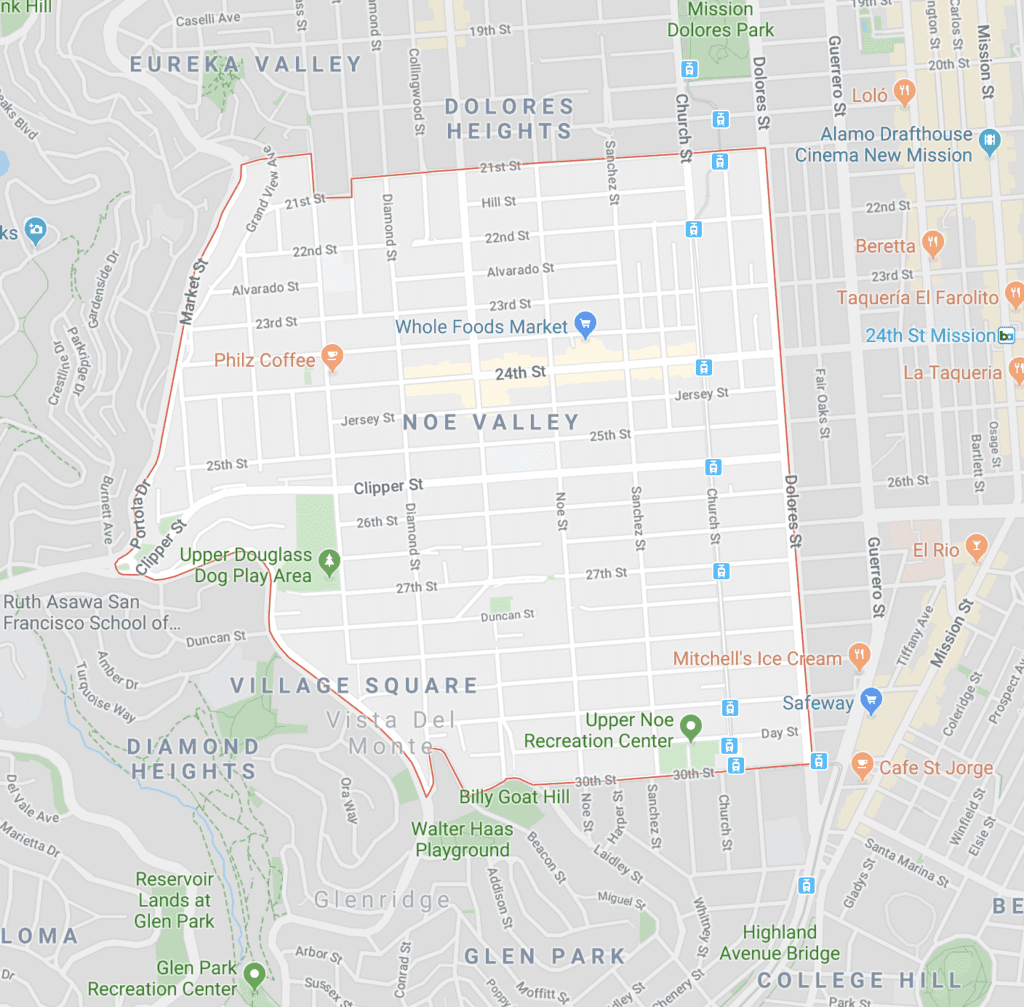
Travel to SF – Noe Valley
Noe Valley’s main shopping drag has everything you could need, but if you live in one of the hills surrounding it, be prepared to get your heart rate up on the way home. Noe Valley is a quaint, in-demand place to live that’s geared toward young families. The neighborhood features tidy rows of Victorian and Edwardian homes, and thanks to surrounding hills, has some of the city’s sunniest weather. Stroller pushers and dog walkers jostle along 24th Street, which is stocked with bakeries, wine and cheese shops and relaxed cafes. A weekly farmers’ market is held in the modest town square.
Who lives here: The middle- to upper-management tech/biotech/professional folks who could take the shuttle to work but otherwise drive their Prius/Audi/BMW to work around 10am to avoid rush hour. Families and tech people with young children who appreciate that there are so many Google bus stops nearby.
Where to eat: Noe Valley Bakery, The Valley Tavern, The Little Chihuahua and Fresca.
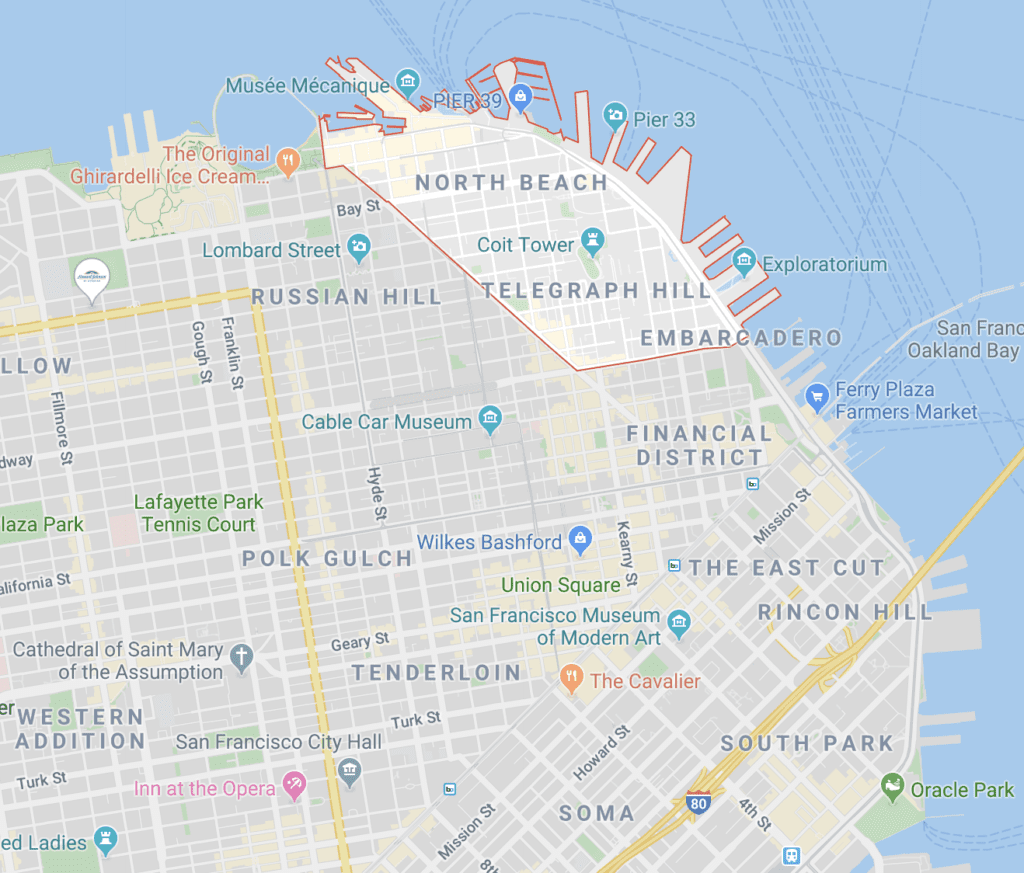
Travel to SF – North Beach
Known for being home to Italian Americans (which it still is) and beatniks (not so much), North Beach is a bustling neighborhood that gets a ton of bridge and tunnel traffic on the weekends.
Who lives here: It’s still home to a lot of Italian Americans and old-school San Franciscans. A chain-smoking, espresso-drinking artiste wearing a black beret who really, really wants to talk to you about the later films of Pier Paolo Pasolini.
Where to eat: Gary Danko, Fog Harbor Fish House, Kokkari Estiatorio, Tony’s Pizza Napoletana
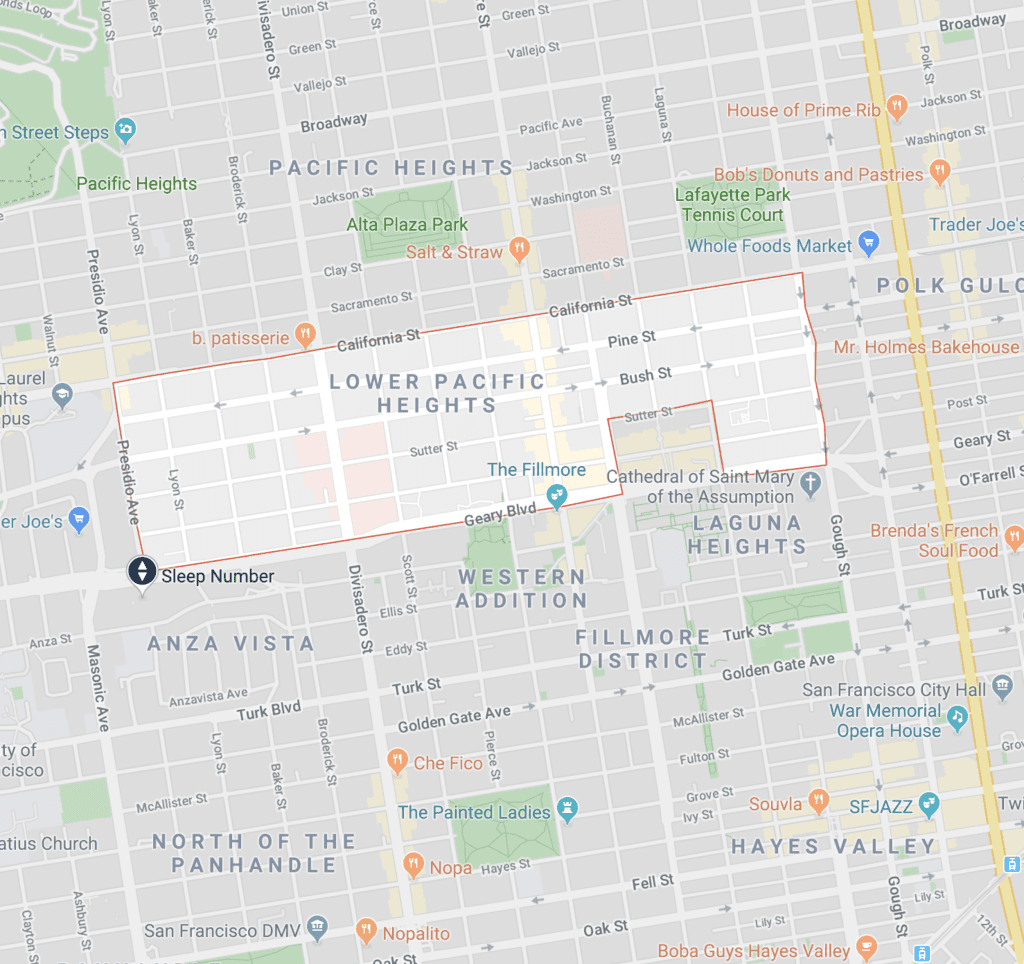
Travel to SF – Lower Pac Heights
Thank you realtors for yet another neighborhood that used to be called something totally different 20 years ago. (Western Addition, Upper Fillmore, Lower Pac Heights.) Lower Pacific Heights is an eclectic, pedestrian-friendly part of the Western Addition near ritzy Pacific Heights. Fillmore Street buzzes with designer boutiques, trendy restaurants and cafes. Residents enjoy proximity to long-standing music venues and Japantown’s sushi bars.
Who lives here: People who want to claim Pac Heights, but can’t afford Pac Heights; young professionals
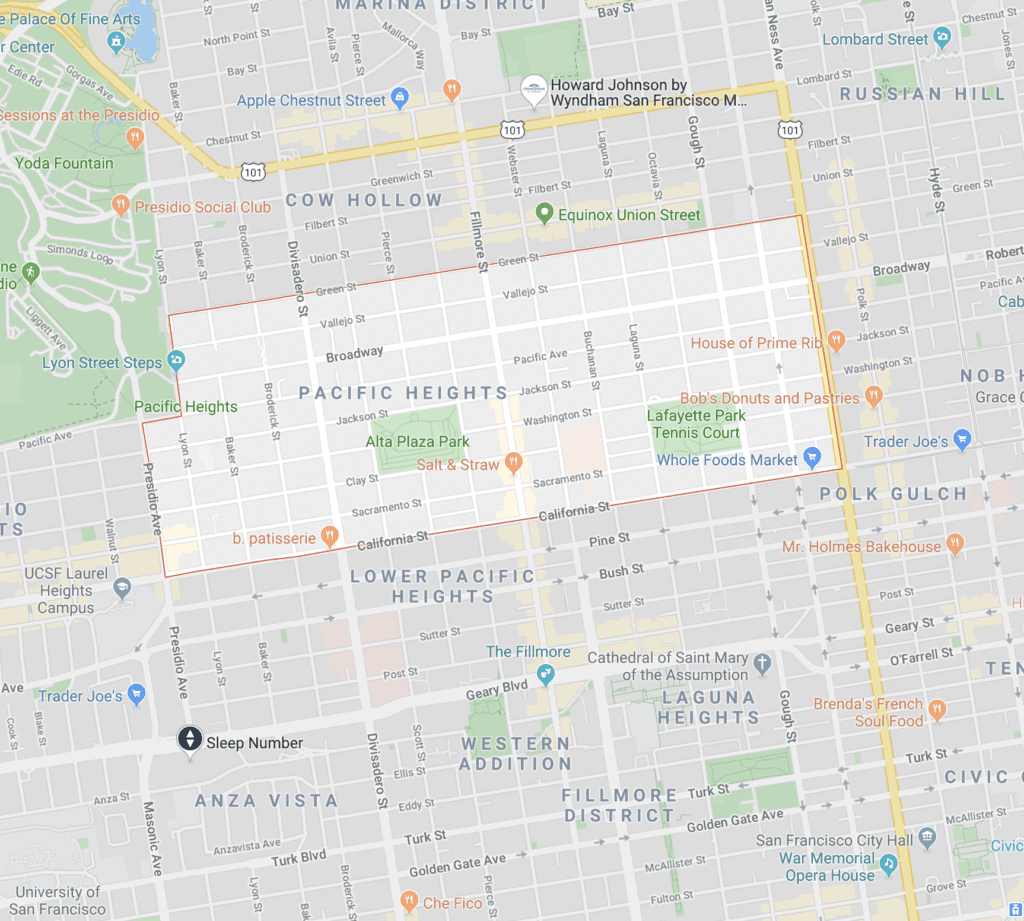
Travel to SF – Pac Heights
If you like mansions, stunning views, and mingling with the 1%, then you’ll love Pac Heights. Pacific Heights is a posh residential enclave known for its architecturally significant homes, including the opulent Spreckels Mansion and the 1886 Haas-Lilienthal house, a Queen Anne Victorian that’s open to the public. A pair of grassy hilltop parks, Lafayette and Alta Plaza, and the Lyon Street Stairs provide sweeping views of the bay. Fillmore Street is a lively hub with high-end fashion boutiques and cafes.
Who lives here: Well-heeled seniors and entitled 30-somethings who don’t work in tech – Danielle Steele; Nancy Pelosi; Larry Ellison.
Where to eat: State Bird, Avery Restaurant, Provisions, Delfina, SPQR, Dosa
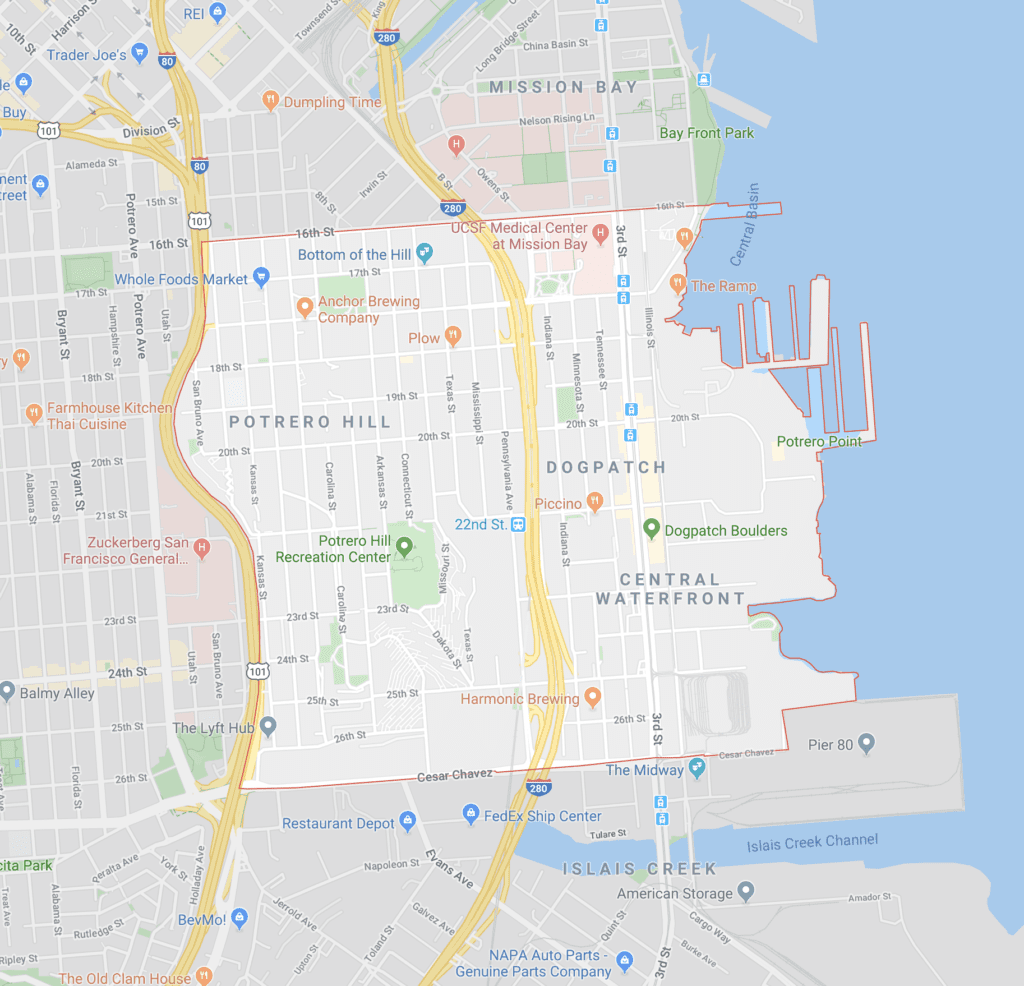
Travel to SF – Potrero Hill
It’s always sunny in Potrero Hill. And often times, there’s parking as well. Family-friendly Potrero Hill is an often-sunny, hilly area with bay and skyline views and a mix of condos and classic Victorians, plus parks with sports facilities. A working-class neighborhood until gentrification in the 1990s, it is now an upper-middle-class, family-oriented neighborhood with two freeways and a Caltrain station. 18th Street has quaint eateries and shops. Nearby are gritty music spots and the historic Anchor Brewing Company, which offers tours. On the neighborhood’s eastern edge, industrial-cool Dogpatch, with hip bars and eateries, runs along the waterfront.
Who lives here: Creatives and techies. Upper-middle-class people, often with families.
Where to eat: Plow, Marcella’s Lasagneria, Papito, Pera, Long Bridge Pizza Co.

Travel to SF – Presidio Heights
A lovely extension of Pacific Heights that’s right on the border of the Presidio. Presidio Heights is a serene, tree-lined area featuring many styles of high-end single-family homes, including the Tudor-inspired 1909 Roos House. The vast Presidio park borders the neighborhood, offering residents access to the Julius Kahn Playground, plus hiking and golf. Sacramento and California streets offer a mix of elegant eateries, old-school markets and stylish outposts for fashion and home goods.
Who lives here: Affluent people
Where to eat: Spruce, Sociale, Sorrel, PRESIDIO SOCIAL CLUB
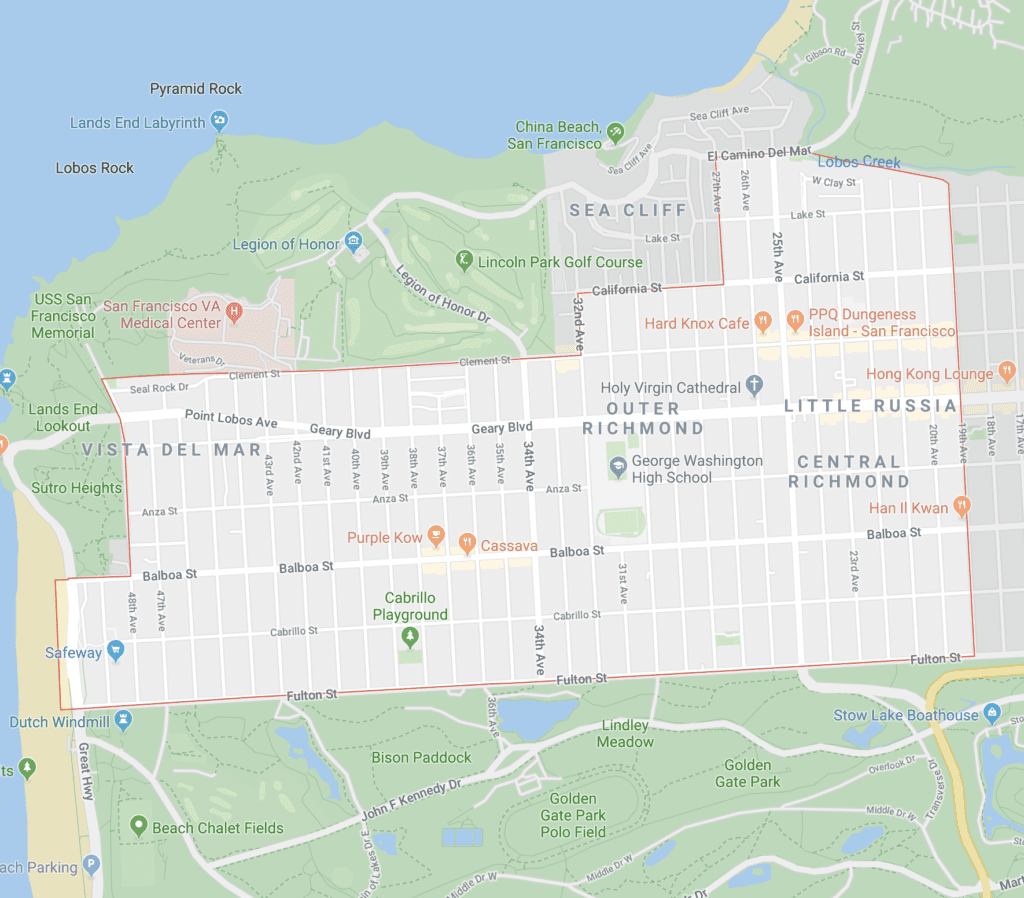
Travel to SF – Outer Richmond
The Outer Richmond is still somewhat affordable, which makes it a great place to live, if you don’t care that there are never any cabs or Ubers around. And if you’re okay with constant fog. The Outer Richmond is a low-key district with Russian and Chinese roots, and pockets of casual neighborhood eateries. The foggy area is bounded by the Pacific, sprawling Golden Gate Park, the scenic Presidio and Lincoln Park, which features the acclaimed Legion of Honor art museum. There’s surfing at blustery Ocean Beach, overlooked by the landmark Cliff House restaurant, and the ruins of the historic Sutro Baths.
Who lives here: There are a lot of families in the Richmond District, and a great mix of nationalities, including Asian, Russian, Japanese, and Eastern European residents. Surfers; families; Russians; Irish; Chinese; wealthy people.
Where to eat: LA VIE, TURTLE TOWER RESTAURANT, PPQ Dungeness Island
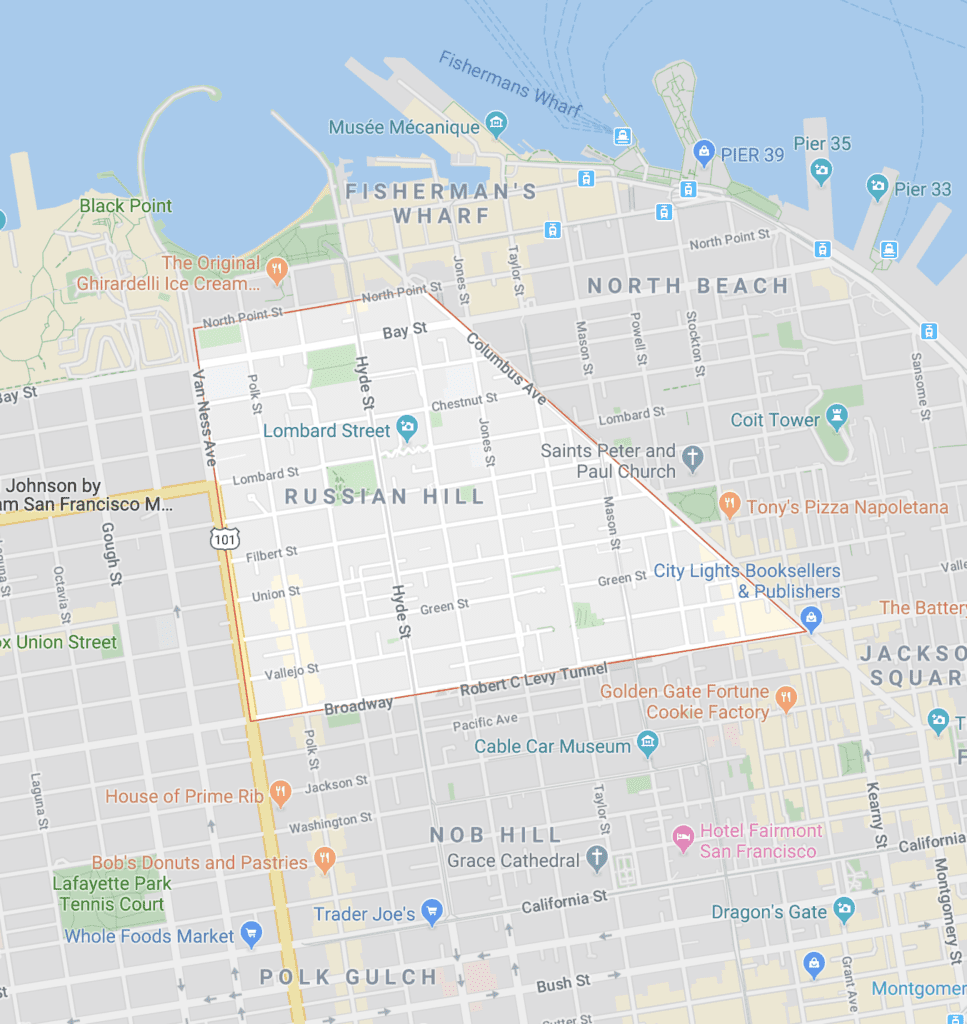
Travel to SF – Russian Hill
Home to the (not actually) crookedest street in the world, hidden staircases, and cozy restaurants, Russian Hill is a favorite spot for people who like the idea of the Marina, but don’t want to live in the Marina. Russian Hill is a quaint, upscale residential community known for the famously crooked Lombard Street, a major tourist destination. The iconic San Francisco cable cars crest the neighborhood’s hills, which provide views of a number of city landmarks including the Golden Gate and Bay bridges. Commercial stretches along Polk and Hyde Streets offer an assortment of trendy and old-school restaurants, bars and shops.
Who lives here: Young urban professionals; couples who haven’t had babies (yet); San Francisco families with old money.
Where to eat: SSAL, Abrazo, Seven Hills
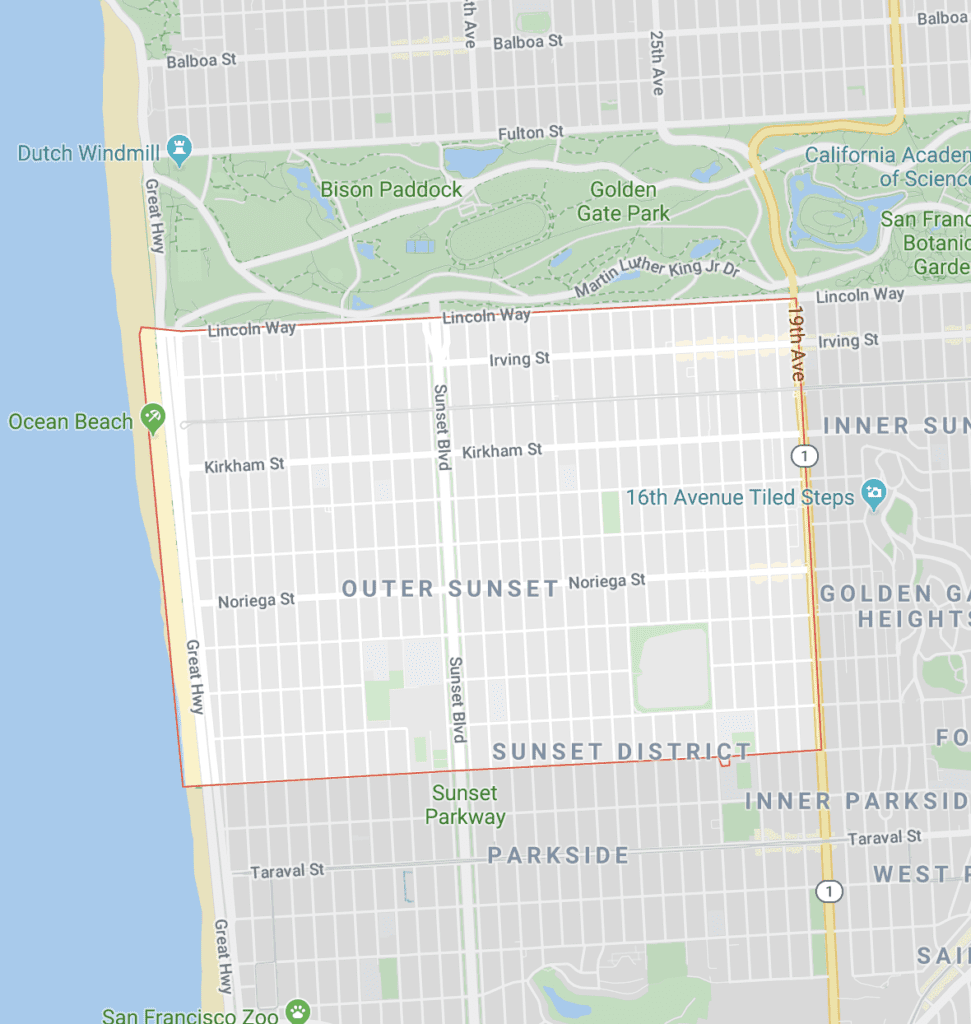
Travel to SF – Outer Sunset
Pretty much like the Outer Richmond, except on the other side of the park. You’re close to the beach, but that means you’re also close to the fog. And at times it can feel like suburbia. The peaceful Outer Sunset neighborhood rests along the city’s foggy western shore, just south of expansive Golden Gate Park. A flat street grid is occupied by unassuming single-family homes and commercial stretches featuring brunch hot spots, Asian restaurants, beer bars and indie boutiques. Often cold and gusty, Ocean Beach is a major destination for surfing as well as walking and biking among sand dunes.
Who lives here: Half of the Sunset’s residents are Asian American. There are also a lot of Irish Americans and plenty of families. And surfers.
Where to eat: Hook Fish Co, CHALOS, New Taraval Cafe

Travel to SF – SoMa
SoMa used to be warehouses and seediness; now it’s charmless loft apartments and startups. Still, it is home to the Giants and there are some great food and drink options. During the week, anyway. Truthfully, this neighborhood is hard to define because it’s so sprawling. SoMa, or South of Market, is a vast, warehouse-filled district. It encompasses Mission Bay and South Beach, where the Giants play baseball at waterfront AT&T Park. Surrounding Yerba Buena Gardens is an arts center, sleek convention complex Moscone Center and several museums, including the acclaimed San Francisco Museum of Modern Art (SFMOMA). The area is dotted with upscale dining options and high-energy nightclubs.
Who lives here: Yuppies in puffy North Face sweaters buying prepared foods at Whole Foods or big hairy daddies clad in leather chaps in search of the nearest beer bust. Tech bros; homeless people.
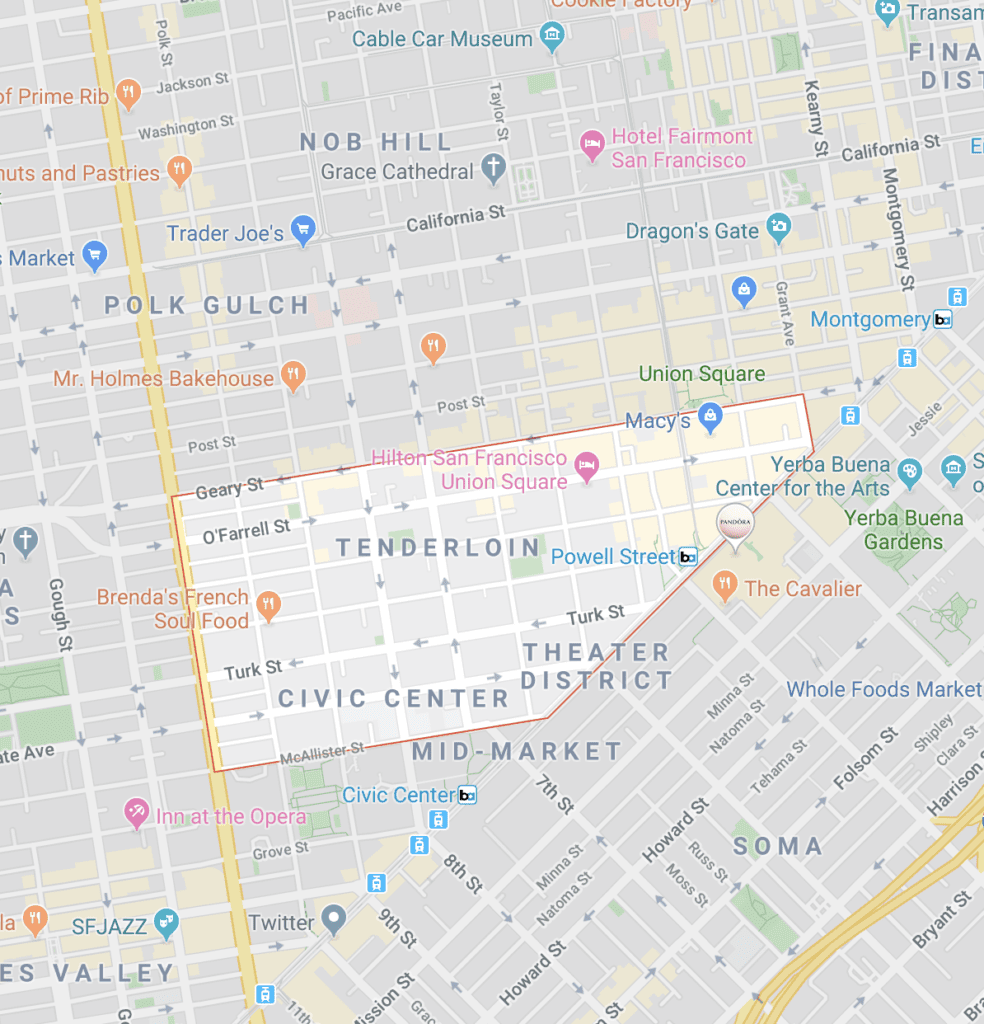
Travel to SF – Tenderloin
In a city full of nice neighborhoods, the TL is not. In fact, it has the some of the highest crime rates in the city. Still, there are plenty of reasons to live here, one of which is affordable housing and the other of which is good bars and restaurants. The famously gritty Tenderloin has underground art spaces, classic concert venues such as the Great American Music Hall and historic theaters staging Broadway and indie shows. It’s funky, colorful streets feature a mix of upscale, trendy and casual restaurants. Nightlife ranges from dark dives slinging beer and shots to speakeasy-style bars mixing craft cocktails. Little Saigon is known for its Vietnamese eateries.
Who lives here: There’s a large homeless population (Drug dealers, drug addicts, and the mentally ill) as well as young people looking for cheap places to live.
Where to eat: Brenda’s French Soul Food, Tonton Restaurant とんとん, Pearl’s Deluxe Burgers
